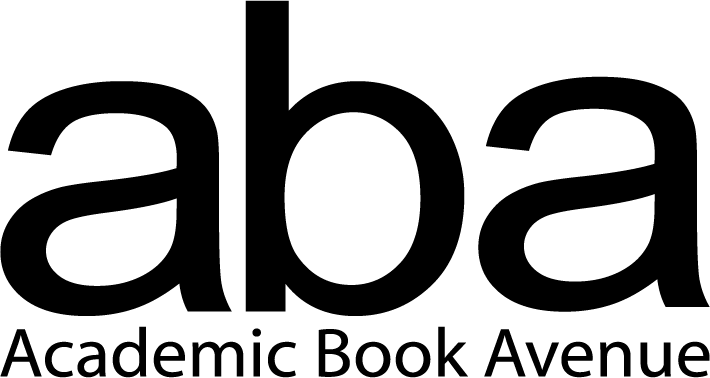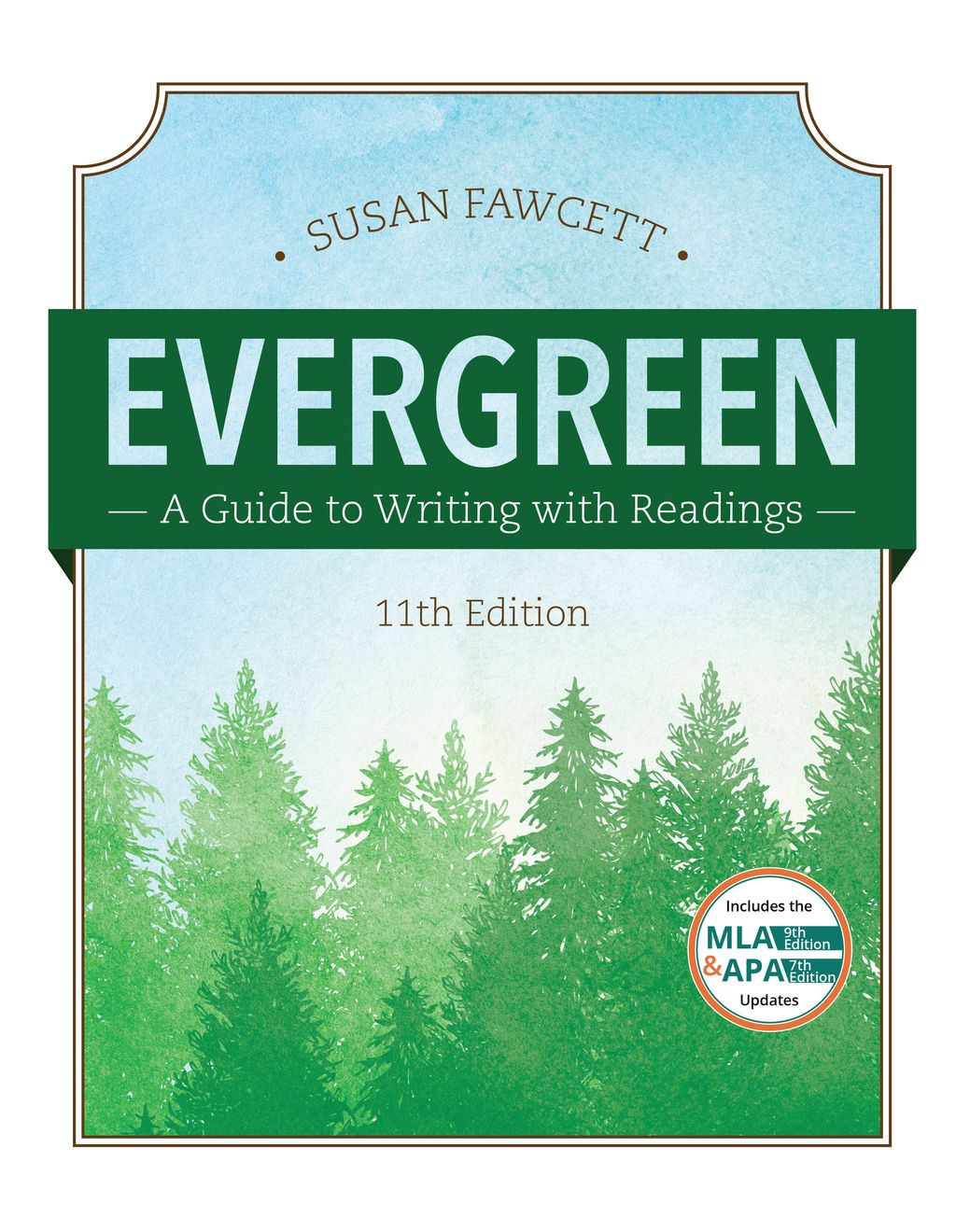Evergreen: A Guide to Writing with Readings, 11th Edition, 9781337097048
- Regular price
- RM 210.00
- Sale price
- RM 210.00
- Regular price
-
RM 210.00
Share
- Susan Fawcett
- ISBN-13: 9781337097048 | ISBN-10: 1337097047
- Copyright 2018 | Published 2017
- 656 pages
EVERGREEN, which has brought success to thousands of students across the country, takes you through the writing process step by step. The book provides you with clear instructions, numerous models of student writing, helpful diagrams and visuals, and plenty of practice exercises. This edition includes a new focus on improving your papers through writing better thesis statements. Photographs accompany and enhance the readings and encourage thoughtful consideration of advertisements, websites, and illustrations. Twenty readings at the end of the book, by authors who represent many different backgrounds and ethnic groups, discuss topics as diverse as multitasking, creating apps, preparing for the zombie apocalypse, and more.
Unit I: GETTING STARTED.
1. Exploring the Writing Process.
The Writing Process. Subject, Audience, and Purpose.
2. Prewriting to Generate Ideas.
Freewriting. Brainstorming. Clustering. Asking Questions. Keeping a Journal. Unit I Writers' Workshop: Using One or Two of Your Five Senses, Describe a Place.
Unit II: DISCOVERING THE PARAGRAPH.
3. The Process of Writing Paragraphs.
Defining and Looking at the Paragraph. Narrowing the Topic and Writing the Topic Sentence. Generating Ideas for the Body. Selecting and Dropping Ideas. Arranging Ideas in a Plan or an Outline. Writing and Revising the Paragraph.
4. Achieving Coherence.
Coherence Through Order. Coherence Through Related Sentences. Unit II Writers' Workshop: Discuss the Pressures of Living in Two Worlds.
Unit III: DEVELOPING THE PARAGRAPHS.
5. Illustration.
Critical Thinking and Writing. Checklist: The Process of Writing an Illustration Paragraph. Suggested Topic Sentences for Illustration Paragraphs.
6. Narration.
Critical Thinking and Writing. Checklist: The Process of Writing a Narrative Paragraph. Suggested Topics for Narrative Paragraphs.
7. Description.
Critical Viewing and Writing. Checklist: The Process of Writing a Descriptive Paragraph. Suggested Topics for Descriptive Paragraphs.
8. Process.
Critical Thinking and Writing. Checklist: The Process of Writing a Process Paragraph. Suggested Topics for Process Paragraphs.
9. Definition.
Single-Sentence Definitions. The Definition Paragraph. Critical Thinking and Writing. Checklist: The Process of Writing a Definition Paragraph. Suggested Topics for Definition Paragraphs.
10. Comparison and Contrast.
The Contrast and the Comparison Paragraphs. Critical Thinking and Writing. Checklist: The Process of Writing a Comparison or Contrast Paragraph. Suggested Topics for Contrast or Comparison Paragraphs. The Comparison and Contrast Paragraph. Suggested Topics for Comparison and Contrast Paragraphs.
11. Classification.
Critical Thinking and Writing. Checklist: The Process of Writing a Classification Paragraph. Suggested Topics for Classification Paragraphs.
12. Cause and Effect.
Critical Thinking and Writing. Checklist: The Process of Writing a Cause and Effect Paragraph. Suggested Topics for Cause and Effect Paragraphs.
13. Persuasion.
Critical Viewing and Writing. Checklist: The Process of Writing a Persuasive Paragraph. Suggested Topics for Persuasive Paragraphs. Unit III Writers' Workshop: Give Advice to College Writers.
Unit IV: WRITING THE ESSAY.
14. The Process of Writing an Essay.
Looking at the Essay. Writing the Thesis Statement. Generating Ideas for the Body. Organizing Ideas into an Outline. Ordering and Linking Paragraphs in the Essay. Writing and Revising Essays. Checklist: The Process of Writing an Essay. Suggested Topics for Essays.
15. The Introduction, the Conclusion, and the Title.
The Introduction. The Conclusion. The Title.
16. Types of Essays I.
The Illustration Essay. Student Essays. Critical Viewing and Writing: Illustration. Planning and Writing the Illustration Essay. The Narrative Essay. Student Essays. Critical Viewing and Writing: Narrative. Planning and Writing the Narrative Essay. The Descriptive Essay. Student Essays. Critical Viewing and Writing: Description. Planning and Writing the Descriptive Essay. The Process Essay. Student Essays. Critical Viewing and Writing: Process. Planning and Writing the Process Essay. The Definition Essay. Student Essays. Critical Viewing and Writing: Definition. Planning and Writing the Definition Essay.
17. Types of Essays II.
The Comparison and the Contrast Essay. Student Essays. Critical Viewing and Writing: Comparison Contrast. Planning and Writing the Comparison and the Contrast Essay. The Classification Essay. Student Essays. Critical Viewing and Writing: Classification. Planning and Writing the Classification Essay. The Cause and Effect Essay. Student Essays. Critical Viewing and Writing: Cause and Effect. Planning and Writing the Cause and Effect Essay. The Persuasive Essay. Student Essays. Critical Viewing and Writing: Persuasion. Planning and Writing the Persuasive Essay.
18. Summarizing, Quoting, and Avoiding Plagiarism.
Avoiding Plagiarism. Writing a Summary. Checklist: The Process of Writing a Summary. Using Direct and Indirect Quotation (Paraphrase).
19. Strengthening an Essay with Research.
Improving an Essay with Research. Finding and Evaluating Outside Sources: Library and Internet. Adding Sources to Your Essay and Documenting Them Correctly Using MLA Style. Adding Sources to Your Essay and Documenting Them Correctly Using APA Style. MLA versus APA: A Quick Reference.
20. Writing Under Pressure: The Essay Examination.
Budgeting Your Time. Reading and Understanding the Essay Question. Choosing the Correct Paragraph or Essay Pattern. Writing the Topic Sentence or the Thesis Statement. Checklist: The Process of Answering an Essay Question. Unit IV Writers' Workshop: Analyze a Social Problem.
Unit V: IMPROVING YOUR WRITING.
21. Revising for Consistency and Parallelism.
Consistent Tense. Consistent Number and Person. Parallelism.
22. Revising for Sentence Variety.
Mix Long and Short Sentences. Use a Question, a Command, or an Exclamation. Vary the Beginnings of Sentences. Vary Methods of Joining Ideas. Avoid Misplaced and Confusing Modifiers. Review and Practice.
23. Revising for Language Awareness.
Exact Language: Avoiding Vagueness. Concise Language: Avoiding Wordiness. Fresh Language: Avoiding Triteness. Figurative Language: Similes and Metaphors.
24. Putting Your Revision Skills to Work.
Unit V Writers' Workshop: Examine Something That Isn't What It Appears to Be.
Unit VI: REVIEWING THE BASICS.
25. Proofreading to Correct Your Personal Error Patterns.
Identifying and Tracking Your Personal Error Patterns. Create a Personal Error Patterns Chart. Proofreading Strategies.
26. The Simple Sentence.
Defining and Spotting Subjects. Spotting Prepositional Phrases. Defining and Spotting Verbs. Proofreading Strategy.
27. Coordination and Subordination.
Coordination. Subordination. Semicolons. Conjunctive Adverbs. Critical Thinking and Writing. Review. Proofreading Strategy.
28. Avoiding Sentence Errors.
Avoiding Run-Ons and Comma Splices. Proofreading Strategy. Avoiding Fragments. Proofreading Strategy.
29. Present Tense (Agreement).
Defining Subject-Verb Agreement. Three Troublesome Verbs in the Present Tense: To Be, To Have, To Do. Special Singular Constructions. Separation of Subject and Verb. Sentences Beginning with There and Here. Agreement in Questions. Agreement in Relative Clauses. Proofreading Strategy.
30. Past Tense.
Regular Verbs in the Past Tense. Irregular Verbs in the Past Tense. A Troublesome Verb in the Past Tense: To Be. Troublesome Pairs in the Past Tense: Can/Could, Will/Would. Proofreading Strategy.
31. The Past Participle.
Past Participles of Regular Verbs. Past Participles of Irregular Verbs. Using the Present Perfect Tense. Using the Past Perfect Tense. Using the Passive Voice (To Be and the Past Participle). Using the Past Participle as an Adjective. Proofreading Strategy.
32. Nouns.
Defining Singular and Plural. Signal Words: Singular and Plural. Signal Words with _of_. Proofreading Strategy. Critical Thinking and Writing.
33. Pronouns.
Defining Pronouns and Antecedents. Making Pronouns and Antecedents Agree. Referring to Antecedents Clearly. Special Problems of Case. Using Pronouns with -self and –selves. Proofreading Strategy.
34. Prepositions.
Working with Prepositional Phrases. Prepositions in Common Expressions. Proofreading Strategy.
35. Adjectives and Adverbs.
Defining and Using Adjectives and Adverbs. The Comparative and the Superlative. A Troublesome Pair: Good/Well. Proofreading Strategy.
36. The Apostrophe.
The Apostrophe for Contractions. The Apostrophe for Ownership. Special Uses of the Apostrophe. Proofreading Strategy.
37. The Comma.
Commas for Items in a Series. Commas with Introductory Phrases, Transitional Expressions, and Parentheticals. Commas for Appositives. Commas with Nonrestrictive and Restrictive Clauses. Commas for Dates and Addresses. Minor Uses of the Comma. Proofreading Strategy.
38. Mechanics.
Capitalization. Proofreading Strategy. Titles. Direct Quotations. Proofreading Strategy. Minor Marks of Punctuation.
39. Putting Your Proofreading Skills to Work. Proofreading Strategy.
Unit VI Writers' Workshop: Adopt a New Point of View.
Unit VII: STRENGTHENING YOUR SPELLING.
40. Spelling.
Suggestions for Improving Your Spelling. Computer Spell Checkers. Spotting Vowels and Consonants. Doubling the Final Consonant (in Words of One Syllable). Doubling the Final Consonant (in Words of More Than One Syllable). Dropping or Keeping the Final E. Changing or Keeping the Final Y. Adding -S or –ES. Choosing IE or EI. Spelling Lists. Proofreading Strategy.
41. Look-Alikes/Sound-Alikes. Proofreading Strategy.
Unit VII Writers' Workshop: Discuss a Time When You Felt Blessed.
Unit VIII: READING STRATEGIES AND SELECTIONS.
42. Reading Strategies for Writers.
Active Reading. Checklist: The Process of Reading a Text Actively. What Your Supermarket Knows About You, Martin Lindstrom. SQ3R: Survey, Question, Read, Recite, and Review. REAP: Read, Encode, Annotate, Ponder. Connecting Reading and Writing.
43. Reading Selections.
Arab Bloggers: A Blessed Generation? Hisham Almiraat. Driving While Stupid, Dave Barry. Everything You Wanted to Know about Generation Z, Laurence Benhamou. Four Types of Courage, Karen Castellucci Cox. Good Grammar Gets the Girl, Elissa Englund. Mandatory Volunteerism Benefits Everyone Involved, Melissa M. Ezarik. Americans are Having Dogs Instead of Babies, Roberto A. Ferdman. On the Rez, Ian Frazier. Multitasking or Mass ADD? Ellen Goodman. Motivation, Christine Harrington. Preparedness 101: Zombie Apocalypse, Ali S. Khan. I Freed Myself When I Embraced My Locks, Evette Collins. The Case for Torture, Michael Levin. Robots Will Steal Your Jobs, But They'll Give Us New Ones, Cade Metz. Book War, Wang Ping. A Risk-Free Life, Leonard Pitts, Jr. How to Make a No. 1 App with $99 and Three Hours of Work, Ryan Rigney. . A Brother's Murder, Brent Staples. When Greed Gives Way to Giving, Ana Veciana-Suarez.
Appendix: Some Guidelines for Students of English as a Second Language.
Acknowledgements.
Index.
Rhetorical Index.





